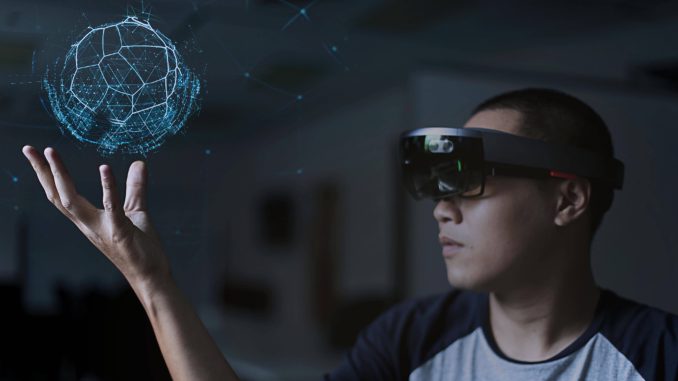
Introduction
Education is evolving rapidly, driven by technological advancements that have transformed traditional classroom settings into dynamic and interactive learning environments. Augmented Reality (AR), a technology that superimposes computer-generated information onto the real world, has emerged as a revolutionary tool in education. As educators and innovators harness the potential of AR, it is becoming increasingly clear that augmented reality in classrooms is poised to become the new norm, fundamentally changing the way we teach and learn.
Augmented Reality: A Brief Overview
Augmented Reality is a technology that enhances the real world by overlaying digital information, such as 3D models, videos, or interactive graphics, onto our physical surroundings. Unlike Virtual Reality (VR), which immerses users in entirely digital environments, AR enhances our perception of the real world. With the help of smartphones, tablets, smart glasses, and specialized AR devices, students can interact with AR content in real-time.
The Advantages of Augmented Reality in Education
Enhanced Engagement: AR makes learning more engaging and interactive by transforming abstract concepts into tangible experiences. For instance, students can explore the solar system, dissect virtual organisms, or step into historical events through AR simulations, making learning fun and memorable.
Personalized Learning: AR allows educators to tailor content to individual students’ needs and learning styles. Teachers can offer adaptive lessons that adjust difficulty levels based on student progress, ensuring a more personalized educational experience.
Real-world Applications: Augmented reality bridges the gap between classroom learning and real-world applications. It prepares students for future careers by offering practical experiences, such as virtual chemistry labs, architectural simulations, or medical procedures.
Accessibility and Inclusivity: AR can help students with disabilities access educational content more easily. For example, it can provide real-time sign language translation or offer audio descriptions for visually impaired students, fostering inclusivity in the classroom.
Remote Learning Solutions: AR can facilitate remote learning by creating immersive virtual classrooms where students from different parts of the world can collaborate, engage in discussions, and learn together as if they were physically present.
Case Studies: Augmented Reality in Action
Anatomy Lessons in AR: Medical students can use AR applications to visualize and dissect virtual human bodies, gaining a deeper understanding of anatomy before working with real patients.
Language Learning: AR apps can transform language learning by superimposing labels, translations, and interactive dialogues onto everyday objects, making vocabulary acquisition more intuitive.
History Immersion: History classes can transport students back in time with AR experiences that recreate historical events, landmarks, and cultural contexts.
Virtual Field Trips: AR allows students to embark on virtual field trips to explore ecosystems, historical sites, and museums, breaking down geographical barriers.
Challenges and Considerations
While the potential of augmented reality in education is vast, there are challenges to consider:
Cost: Implementing AR technology can be expensive, from purchasing devices to developing content. Ensuring equitable access is crucial.
Training: Teachers need adequate training to effectively integrate AR into their curricula.
Privacy and Security: Safeguarding student data and privacy in AR applications is essential.
Conclusion
Augmented reality in classrooms is poised to revolutionize education by enhancing engagement, personalizing learning, fostering real-world skills, and promoting inclusivity. As technology continues to advance, it is increasingly likely that AR will become an integral part of the educational landscape, enriching the learning experience and preparing students for a future where technology is seamlessly integrated into their daily lives. As educators and students embrace augmented reality, the transformation of education into a dynamic, interactive, and immersive journey is well underway, heralding a new era of learning and discovery.